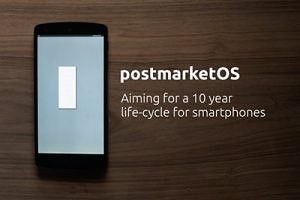Arguably one of the worst things about the Android ecosystem is how quickly most devices reach the end of their software support life cycle, at least when compared to Apple or Google. Right now, you can expect to get up to 2 years of updates and 3 years of security patches from your manufacturer. If you're lucky, those updates may only take months rather than a year to arrive! This is due to many factors, silicon manufacturers being an important one. And Google has done lots of things to try and fix that, the most effort being Project Treble. However, if you're the tech savvy kind of person, you can keep your device up to date with custom ROMs, which port over the newest Android releases and security patches to older, unsupported phones. This is not enough, though, as eventually, age will take its toll, and your phone will become progressively slower as time moves on.
The reason is pretty simple: as Android becomes more feature rich, it also becomes progressively heavier with time, increasing resource usage to a point old phones can't really keep up. You can even install an Android 7.1.1 Nougat ROM on the Samsung Galaxy S (launched in 2010), and while the fact that it boots and works mostly stable is a feat in and of itself, and something quite incredible, it's not really usable as a reliable daily driver due to the heavily outdated hardware. The Hummingbird processor (Exynos 3110) + 512 MB of RAM combo is just not able to run Nougat smoothly, even with overclocking. Phones with 1 GB of RAM are struggling to run the latest custom ROMs.
The same situation does not happen with old computers, though, mainly thanks to GNU/Linux distributions. You can actually take a 2007 computer and install a basic Linux distro on it, and it'll run through most tasks (including web searching, multimedia playback, social networks and more) without a hitch. You will even get the latest security patches and most new features on your old computer. These distros also keep resource usage to a minimum, so while it definitely won't be faster than a newer computer, it will work just fine for most of your casual needs. There is a small project hoping to bring that kind of support to Android phones and tablets, and that project is called postmarketOS.
postmarketOS - a Linux Distro for Your Phone or Tablet
postmarketOS (pmOS for short) has a single premise: it aims to give Android smartphones a 10-year life cycle. It's an actual, touch-optimized Linux distribution that you can get up and running on your smartphone or tablet, no matter how old it is. pmOS builds upon Alpine Linux, a lightweight Linux distribution aimed at security, so you can squeeze decent performance out of an old phone without worrying about out-of-date software packages. They also promise not to restrict features to only certain newer phones or tablets, so even older devices will be able to take advantage of features like full disk encryption.
You can also package and run pretty much anything you want on postmarketOS. It's developed in the spirit of regular Linux distributions so you can even use multiple phone interfaces, ranging from things like Ubuntu Touch to a simple, old-fashioned shell interface. You can also use any app from any ecosystem, including regular Linux desktop applications.
They are also aware of the issues with security holes in old devices. There's not much that can be done, as those depend on device and silicon manufacturers to fix. However, they did say that they're exploring their options to maximize security on their supported phones. They also said that they're interested in using the mainline Linux kernel instead of an Android fork in order to maximize the safety of the user space.
Status of postmarketOS
postmarketOS is currently at a very early stage of development, and it's not usable for most users yet. A pre-alpha version has been booted up on the Google Nexus 5 which is shown in the images of this article, but it's still a big work in progress. There is no ETA either for the release of a stable version, so if you're interested in this project you will have to wait patiently until it's done.
While a 10-year lifespan is truly something unbelievable when speaking about smartphones, we are really excited to see how this project will end up, as it looks like a promising alternative for those who like to keep their old phones around until they physically break. If you want to learn more, check out their website, their wiki, and their subreddit, where you will find everything about this project. If you're interested in contributing to postmarketOS, check out the source code at GitHub!



